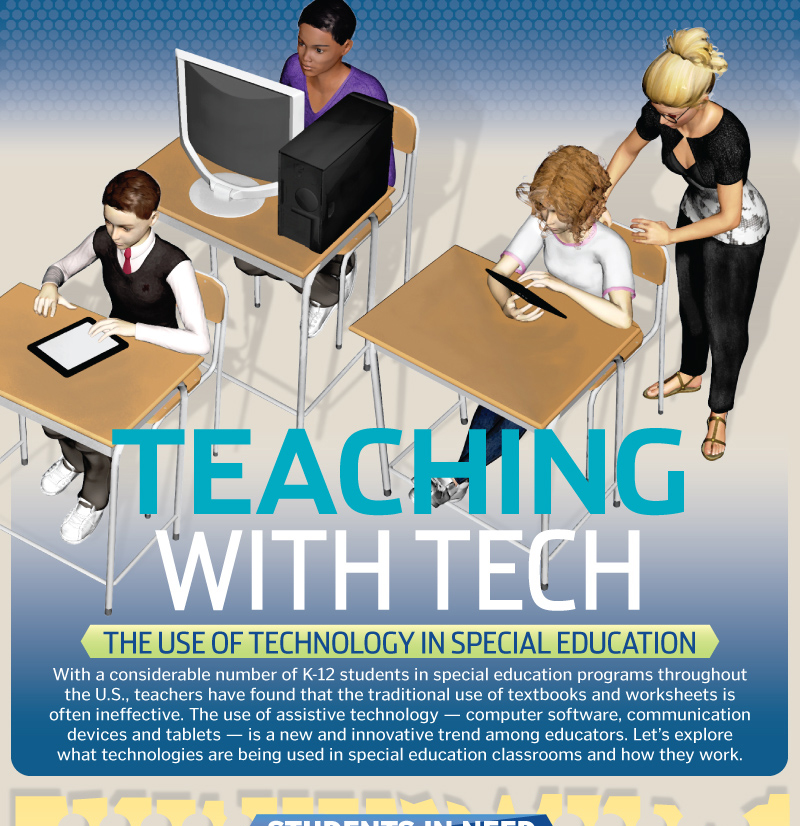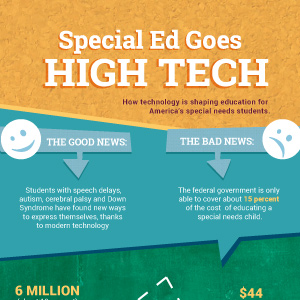Reviewed by Mary McLaughlin, Special Education Teacher; M.S. SpEd


A Brief History of Children with Special Education Needs
Before the 1800s: Persons with physical and mental disabilities were targets of discrimination across cultures for thousands of years. On virtually every continent there are records of isolation, exclusion, and even destruction of persons with disabilities. :
Late 1800s-early 1900s in the U.S.: first public schools for children with disabilities were established. These were segregated programs, and often served children with specific disabilities. Children with disabilities did not go to their home schools.
1918: Compulsory education laws passed. But many children with disabilities were routinely excluded from public schools.
1933: Special education advocacy groups begin.
1947: American Association on Mental Deficiency is launched.
1954: Brown v. Board of Education extended equal protection under the law to minorities, and paved the way for similar gains for those with disabilities
United Cerebral Palsy Association
Muscular Dystrophy Association
John F. Kennedy’s Panel on Mental Retardation.
1965: Congress creates a Bureau of Education for the Handicapped later named Office of Special Education Programs (OSEP).
1975: Public Law 94-142 is passed, requiring public schools to provide an education for students with a broad range of disabilities – including physical handicaps, mental retardation, speech, vision and language problems, emotional and behavioral problems, and other learning disorders.
1990 and 1997: Public Law 94-142 is reauthorized and renamed, the Individuals with Disabilities Education Act (IDEA).
6 million: number of children, OR 10 percent of all school aged kids, that receive special education services.
$51 billion: estimated cost of educating special ed students
$44 billion: of that $51 billion, the estimated cost to state and local school districts
15: percentage, on average, of the cost to educate special education kids paid out by federal government.
Percentage of Students by Disability (Ages 6 to 17)
51%: Specific learning disabilities
21%: speech or language impairments
10%: mental retardation
8%: emotional disorders
8%: others, including multiple disabilities, orthopedic impairments, autism, traumatic brain injury
2%: hearing or visual impairment
Then, Now and the Future
Before IDEA, very few children with disabilities received an adequate education. They frequently suffered discrimination and isolation.
Various applications are available for every student need. Some examples of these applications include:
An application that translates symbols into speech
An application that creates icons to represent objects or the student’s thoughts so they can be reproduced in sound or visuals
A similar application records the student’s voice and associates it to images
A way to help the students calm down when they become nervous or angry
Technologies used in classroom to help with challenges include:
Multimedia technology is being employed in the classroom to help with a variety of challenges from hearing and vision loss to limited physical movement.
Digital textbooks offer high-quality images, video and audio capabilities.
Laptops and netbooks have become a low-cost option for the classroom. Students who struggle with a pen and pencil find new opportunities to express themselves on the computer.
Augmentative and alternative communication (AAC) devices—that help make it possible for individuals with no speech, or individuals with poor speech, to overcome their communication problems. Such as:
Voice Recognition Technology: For those students who are still challenged by the physical keyboard, voice-recognition technology has greatly improved, often reaching 98% in simple text documents. Can be used to replace keystrokes in a document as well as control the overall computer. Most of this software “learns” as the student speaks to it so the results become even more accurate.
Text-to-voice: available on computers and many eBook readers, this software scans text and reads it back to the student. This is helpful to the seeing-impaired student but is also useful to the student who needs the audio reinforcement of the words they are reading.
Touch screen: there may be no need for a physical keyboard. Tapping on a tablet screen with a finger or stylus will give the same results.
Devices to help the hearing impaired:
Hearing aid Frequency Modulated Amplification System Audio Loops Infrared Systems Cochlear Implants Telecommunication Devices for the Deaf Captioned Television Live Speech Captioning
Devices to help the visually impaired:
Closed circuit television magnification Computer screen magnification Descriptive video services Screen readers Optical character recognition Braille Note Apex: digital note taker designed to help visually impaired students take notes.
iPad Apps:
Grace: designed for students with autism
Tap to Talk: aimed at non-verbal students
iCommunicate: creates flash cards
Autism Express: flash card program
Learn it Stars: allows teachers to keep track
Dance Party Zoo: to help improve gross motor skills
iDress for Weather: practicing dressing skills
iWriteWords: Used to help improve motor skills and handwriting
Psychological benefits of these new technologies:
Special technology can make it possible for a student to stay in his or her class instead of being sent to a special program away from his or her friends and peers.
Students with severe learning disabilities can still benefit from technology to advance their learning. It can allow them to communicate with others in ways not available to them before.
Students have less anxiety and frustration, and a feeling of accomplishment.
Sources:
http://www.friscoisd.org/news/2013/04/04/special-ed-technology-revolution
http://education.cu-portland.edu/blog/news/past-present-and-future-of-special-education/
http://www.infoplease.com/encyclopedia/science/mental-retardation-history.html
http://wwfinductionmodules-resources.wiki.educ.msu.edu/file/view/History+of+Special+Education.pdf
http://education.cu-portland.edu/blog/special-ed/9-ipad-apps-for-the-special-education-classroom/




